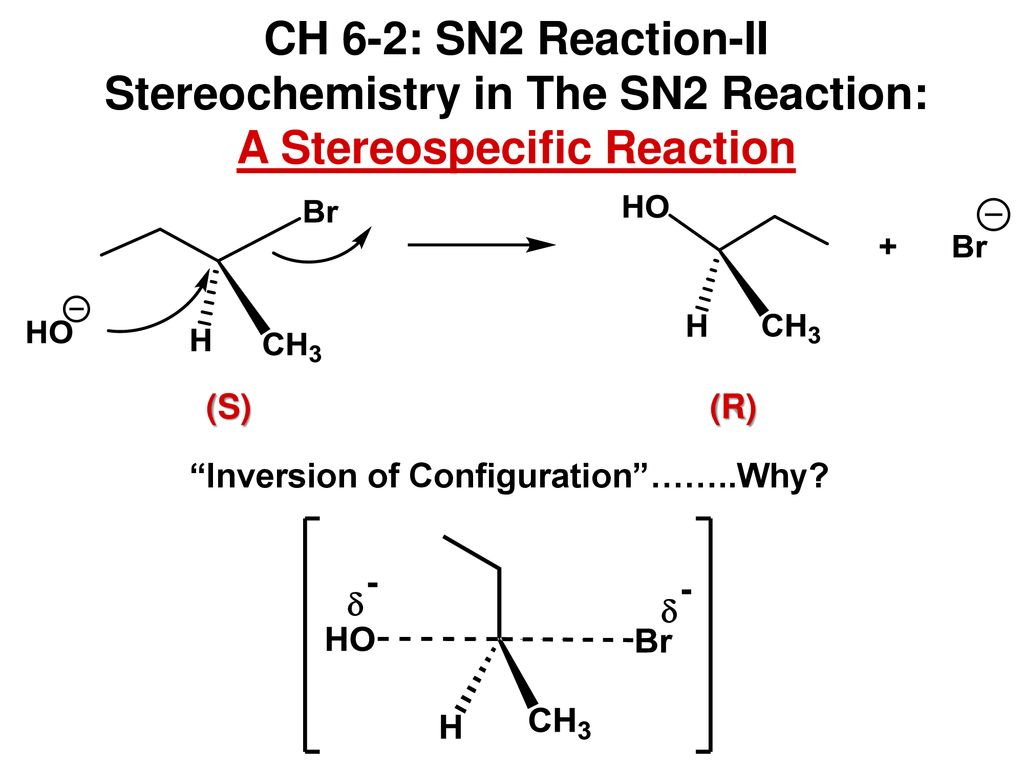Do Vinyl Go Through Sn2 Rections

The picture below helps explain why this reaction is so much more difficult energetically more costly than the more common solvolysis of an alkyl halide.
Do vinyl go through sn2 rections. Sn2 reaction showing concerted bimolecular participation of nucleophile and leaving group. Firstly if the nuclophile comes in on the s n 2 path it will bump into a hydrogen or other group which is trans to the leaving group. Because the bond between the halogen and the carbon in the benzene ring aryl halide or a carbon participating in a double bond vinylic halide is much too strong stronger than that of an alkyl. In addition beta branching next to a primary carbon results in a slower reaction as does a poorer leaving group i e.
They can also act as the nucleophiles for the reaction. As a result less steric congestion for this backside attack results in a faster reaction meaning that s n 2 reactions proceed fastest for primary carbons. Some of the more common factors include the natures of the carbon skeleton the solvent the leaving group and the nature of the nucleophile. The breaking of the c x bond and the formation of the new bond often denoted c y or c nu occur simultaneously through a transition state in which a carbon under nucleophilic attack is.
Solvolysis of vinyl halides in very acidic media is an example. Sn1 versus sn2 reactions whether an alkyl halide will undergo an s n 1 or an s n 2 reaction depends upon a number of factors. In a back side. What determines sn1 or sn2.
This geometry of reaction is called back side attack. S n 2 reactions involve a backside nucleophilic attack on an electrophilic carbon. Sn2 reactions proceed well in polar aprotic solvents such as acetone dmso and acetonitrile. The carbocation can form as an intermediate during sn1 reactions while it is not formed during sn2 reactions.
A consequence of the concerted bimolecular nature of the s n 2 reaction is that the nucleophile must attack from the side of the molecule opposite to the leaving group. A simple substitution reaction can go through two basic types of sequences or reaction mechanisms. It covers the way the reactants are joined up together through transition states and how they transform into the reaction products. In the rate of reaction sn1 reactions are unimolecular and have a step wise mechanism.
A chemical species that donates an electron pair to an electrophile to form a chemical bond in relation to a reaction. The student asked why do vinyl halides not do the s n 2 reaction my answer was that two reasons exist for why the vinyl halide will not react with a nucleophile. Chloride instead of. In organic chemistry a reaction mechanism is the step by step sequence in which a reaction takes place.



















